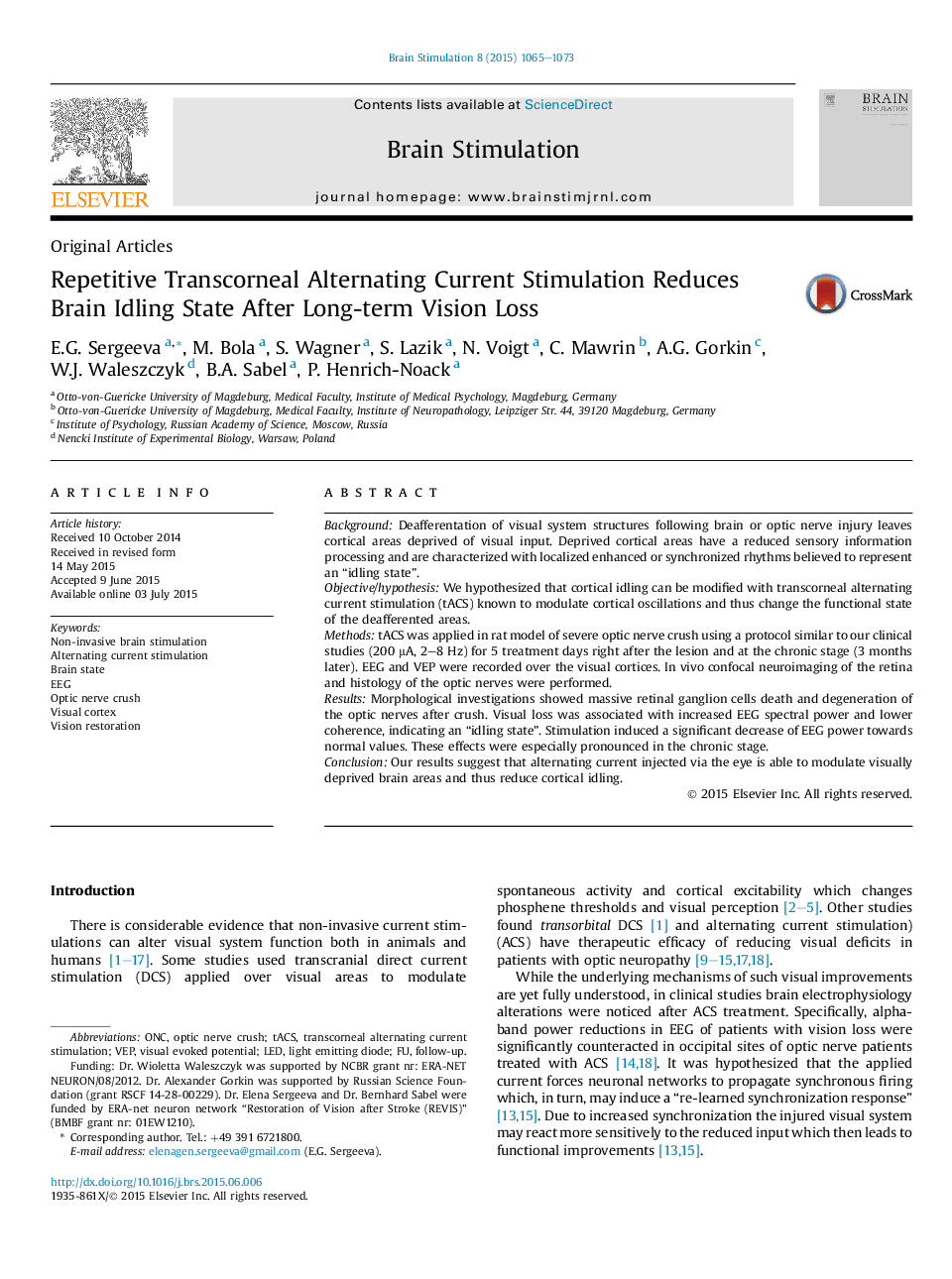| کد مقاله | کد نشریه | سال انتشار | مقاله انگلیسی | نسخه تمام متن |
|---|---|---|---|---|
| 6005478 | 1184665 | 2015 | 9 صفحه PDF | دانلود رایگان |

- Deafferentation after optic nerve crush leaves cortical areas deprived of visual input.
- Deprived cortical areas are considered as passed into an “idling state”.
- “Idling state” is associated with increased EEG spectral power and lower coherence.
- tACS induced a significant decrease of EEG power towards normal values.
- tACS is able to modulate visually deprived brain areas and thus reduce cortical idling.
BackgroundDeafferentation of visual system structures following brain or optic nerve injury leaves cortical areas deprived of visual input. Deprived cortical areas have a reduced sensory information processing and are characterized with localized enhanced or synchronized rhythms believed to represent an “idling state”.Objective/hypothesisWe hypothesized that cortical idling can be modified with transcorneal alternating current stimulation (tACS) known to modulate cortical oscillations and thus change the functional state of the deafferented areas.MethodstACS was applied in rat model of severe optic nerve crush using a protocol similar to our clinical studies (200 μA, 2-8 Hz) for 5 treatment days right after the lesion and at the chronic stage (3 months later). EEG and VEP were recorded over the visual cortices. In vivo confocal neuroimaging of the retina and histology of the optic nerves were performed.ResultsMorphological investigations showed massive retinal ganglion cells death and degeneration of the optic nerves after crush. Visual loss was associated with increased EEG spectral power and lower coherence, indicating an “idling state”. Stimulation induced a significant decrease of EEG power towards normal values. These effects were especially pronounced in the chronic stage.ConclusionOur results suggest that alternating current injected via the eye is able to modulate visually deprived brain areas and thus reduce cortical idling.
Journal: Brain Stimulation - Volume 8, Issue 6, NovemberâDecember 2015, Pages 1065-1073